Dinaric Karst Caves World's Richest In Species, 70% Indigenous To Croatia
February 8, 2021 – The Dinaric karst caves found intermittently down the length of the country's coast are the richest in the world when it comes to species that live within them. Many of them are extremely rare, with 70% of them being indigenous exclusively to Croatia
Dinaric karst caves are one of the best-kept secrets of Dalmatia. While the majestic Dinaric Alps are an ever-present backdrop within holiday photos taken on the Croatian coast, the Dinaric karst caves and cave systems that can be found intermittently running through them remain little known, explored only by a handful of expert speleologists and biologists. And, that is how it should remain, because they are teeming with very rare species.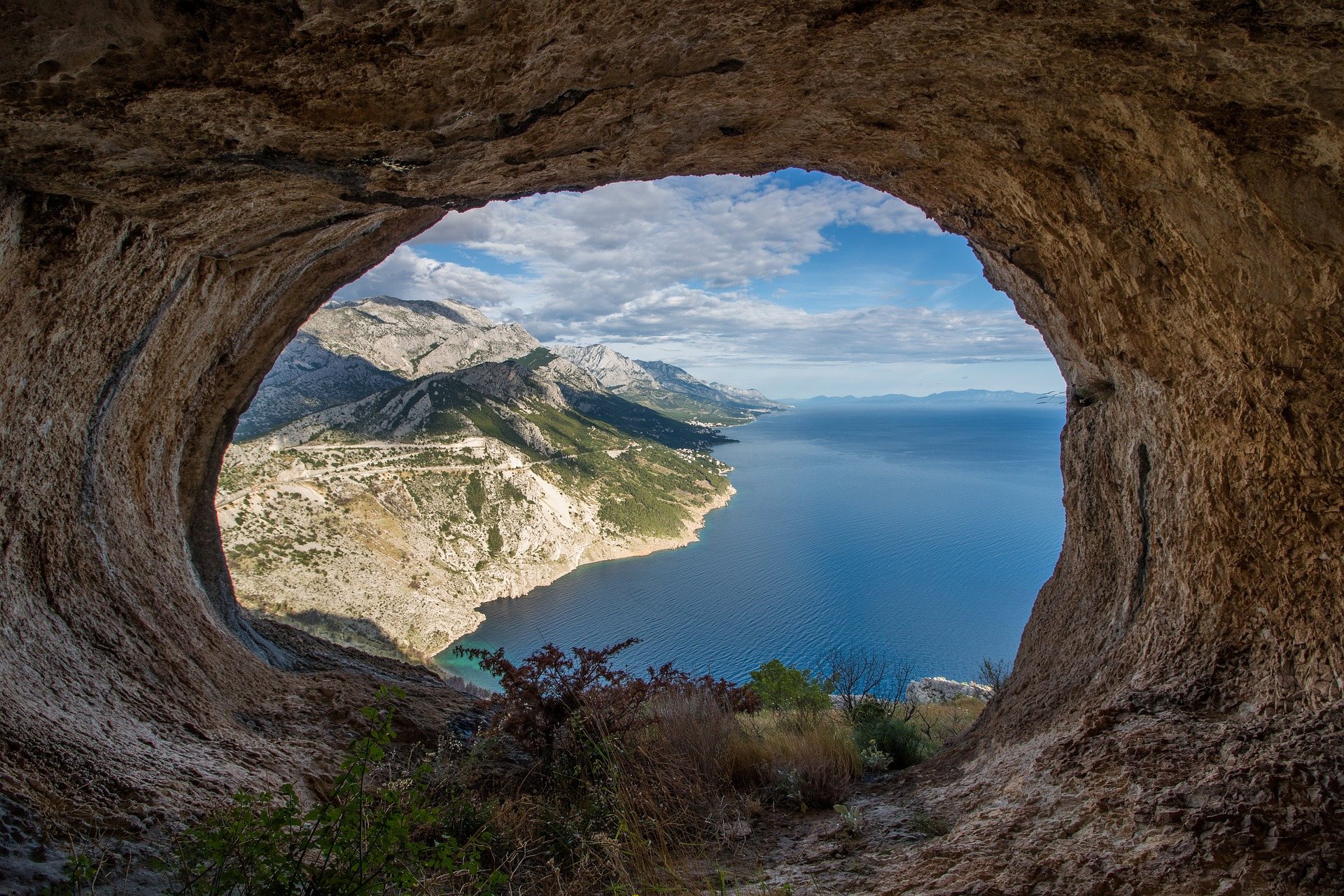 A cave in the Dinaric Alps in Dalmatia
A cave in the Dinaric Alps in Dalmatia
Croatia's Dinaric karst caves are the richest in the world when it comes to species that live within them. Many of the creatures that live in Dinaric karst caves are extremely rare, with 70% of them being indigenous exclusively to Croatia.
Having evolved over millenia to life in the darkened environs of Dinaric karst caves, the animals that inhabit this subterranean ground once lived above-ground and were much more common. The tough, lightless conditions of Dinaric karst caves meant that only those who were strong enough to adapt would survive, developing new features or losing others in response to their habitat.
Recently featured in TCN because it is up for 'Mollusc of the Year', the rare Congeria Kusceri is a classic example of how Dinaric karst caves have changed in response to their environment. The mollusc lost its pigmentation and any sense of sight due to having a lifetime bereft of sunlight.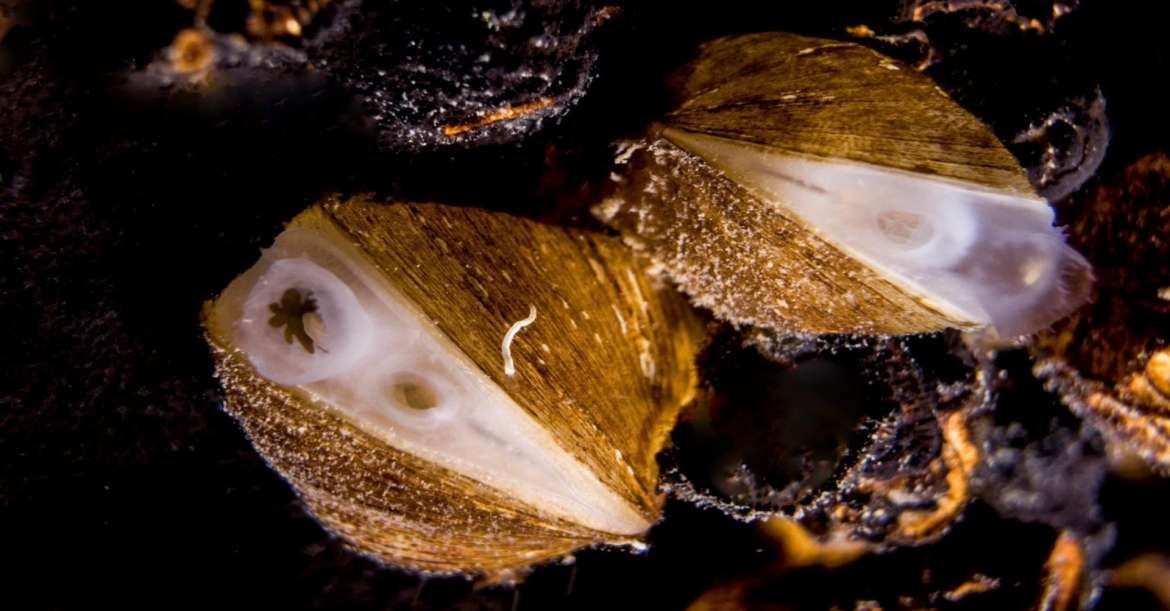 Congeria kusceri © Vedran Jalžić
Congeria kusceri © Vedran Jalžić
According to a recent article published by National Park Krka, who themselves have many rare species and Dinaric karst caves, other classic characteristics of the evolutionary process on Dinaric karst caves species include a thinning of the integument (the protective outer layer, shell or skin), lengthening of body parts, slow metabolism, life longevity, low reproduction, accumulation of fat reserves, reduced aggression, cessation of day-night rhythm, cessation of seasonal changes and activities, and changes in brain structure.
186 Dinaric karst caves species have been endangered according to the endangerment criteria of the International Organization for Nature Protection (IUCN). One of the biggest threats is the pollution of their underground habitats. Therefore, some of caves have been recognised at a national and at an EU-level as being natural habitats of special interest and marked as off-limits. About 400 speleological objects are listed under Caves and pits closed to the public (code 8310) and 220 under Overflowing or partially flooded sea caves (code 8330).
But, for those interested in discovering the hidden network of Dinaric karst caves within Croatia, there are many which are accessible and open to the public. Official guides and several speleology associations are available to reveal these secret subterranean lairs. What you see inside might be just as spectacular as how these mountains look in the background of your holiday snaps.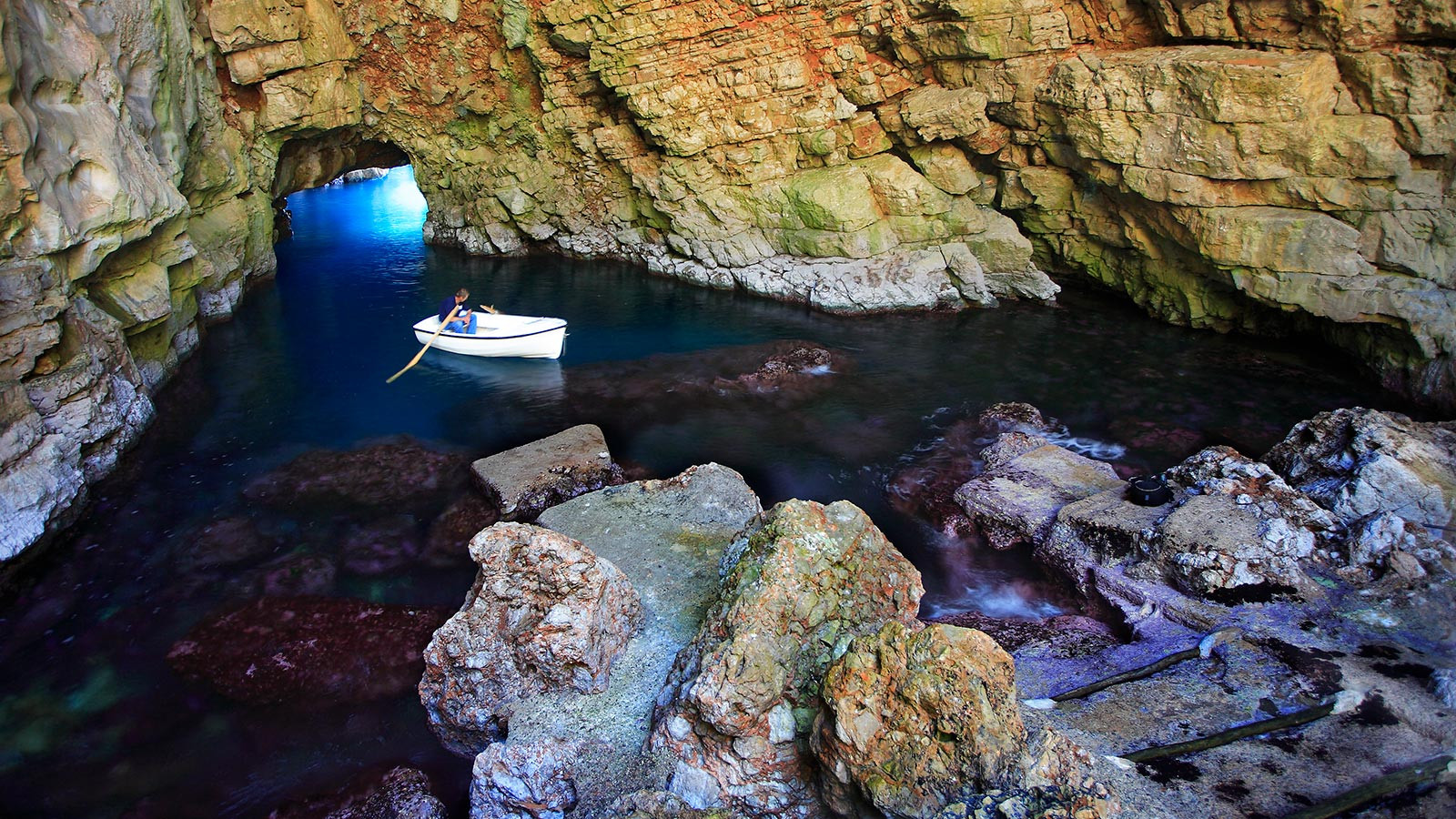
The Ulysses cave on Mljet island, one of the many caves in Croatia which is accessible to the public © TZ Mljet
Indigenous Croatian Species Congeria Kusceri Up For 'Mollusc of the Year'
January 20, 2021 – Let's be honest, Croatia has a lot more photogenic inhabitants than this. But, from over 120 molluscs registered, the indigenous Croatian species Congeria kusceri have been chosen as one of the top five finalists in this year's Mollusc of the Year competition.
There's actually quite a good reason why Congeria kusceri isn't so photogenic – it lives underground. In fact, Congeria kusceri comes from the Congeria genus, which are the only known freshwater underground shellfish in the world. Most of this genus has sadly become extinct. However, three members of the family survive in this region - Congeria jalzici which can be found in Slovenia, northern Velebit and northwestern Lika, Congeria mualomerovici which lives in the Sana basin in Bosnia, and Congeria kusceri which is endemic to underground cave systems of the Neretva and Trebišnjica basins in Herzegovina and southern Dalmatia. Although, that wasn't always the case.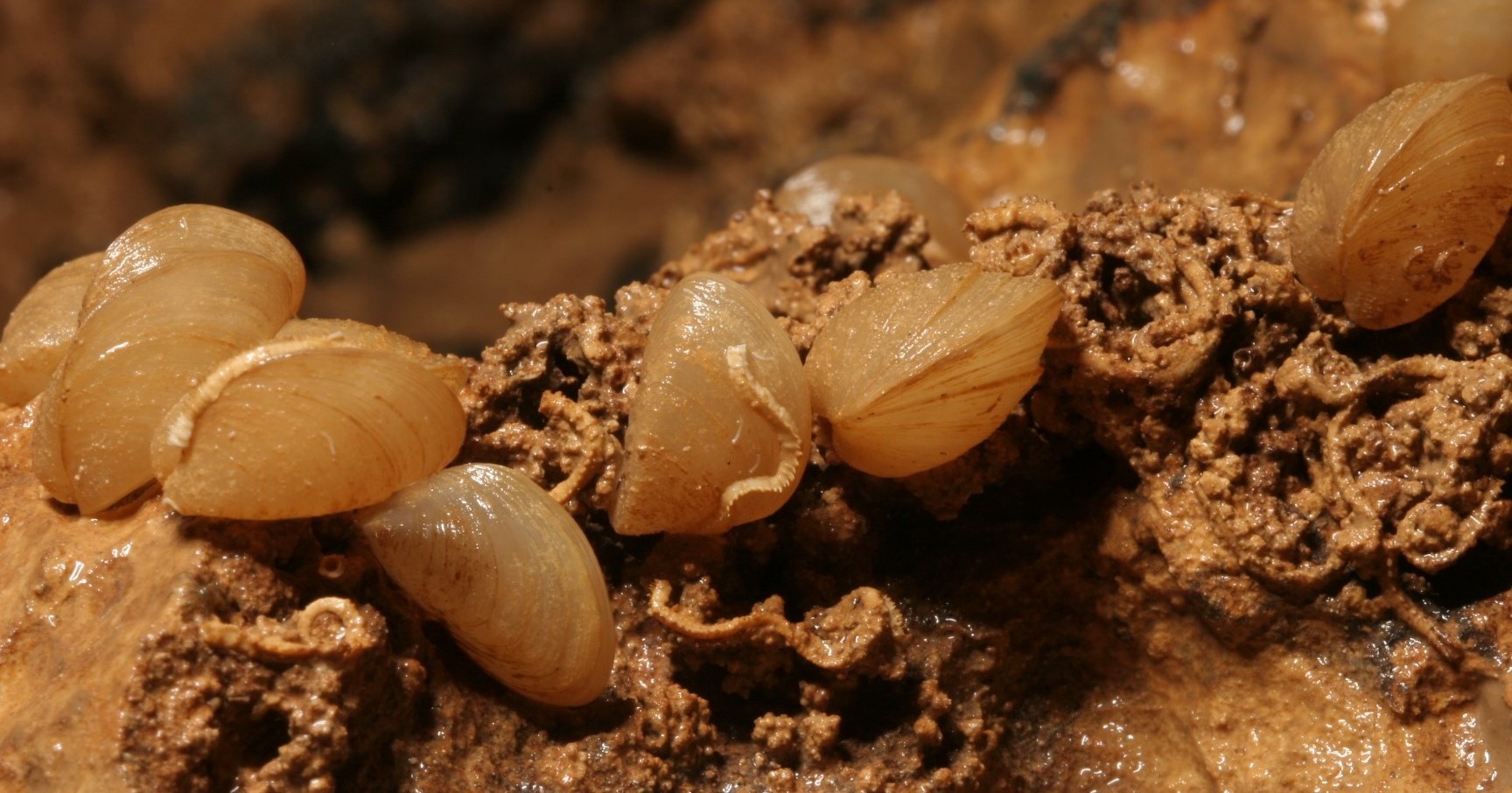 Congeria kusceri are albino molluscs, having lost their pigmentation while living away from sunlight. They live in southern Dalmatia, whose strongly supported football club, Hajduk Split, are also associated with the colour white © The Croatian Biospeleological Society (CBSS)
Congeria kusceri are albino molluscs, having lost their pigmentation while living away from sunlight. They live in southern Dalmatia, whose strongly supported football club, Hajduk Split, are also associated with the colour white © The Croatian Biospeleological Society (CBSS)
The ancestors of these molluscs used to live on the surface of lakes. Some of the molluscs followed the flow of water downstream and ended up inhabiting cave systems underground. Those which were able to adapt to a life of complete darkness survived. Having existed for so long in such a sunless environment, Congeria kusceri have lost their pigmentation - another reason we might consider them unphotogenic.
Congeria kusceri is on the Croatian Red List of Cave Fauna, in the category of critically endangered species, and at the European level, it is protected by the Directive on the Protection of Natural Habitats and Wild Fauna and Flora of the European Union. It is extremely rare. To date, these molluscs have been found in only fifteen underground locations of the Dinaric karst region.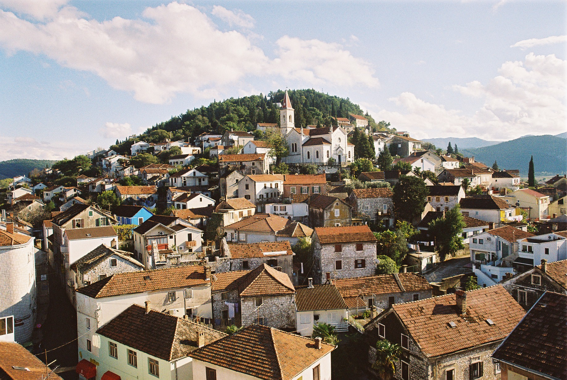 The Predolac hill in Metković © Jure Grm
The Predolac hill in Metković © Jure Grm
The largest living colony of Congeria kusceri that we so far know about can be found at the foot of the Predolac hill in Metković. Congeria kusceri is around two centimetres in length. Once part of a flourishing mollusc family, most of the Congeria genus died out around five million years ago. The genus was considered to be entirely extinct until shells of recently deceased individuals were found near Vrgorac in 1934. Congeria kusceri's new cousins - Congeria jalzici and Congeria mualomerovici – were only described and recognised as distinct sub-species as recently as 2013.
The Mollusc of the Year competition is run by the Senckenberg Research Institute and Museum, and the Centre for Translational and Genomic Biodiversity (TBG) in Frankfurt. Congeria Kusceri's success in being chosen as one of the finalists was announced by the Ruđer Bošković Institute in Zagreb.
Voting for Mollusc of the Year is open to the public. Anyone who is not too shellfish with their time and who may wish to support this endangered Croatian underdog in the competition can vote here
Croatian Speleologists Discover a Cave System Longer Than 52km Below Velebit
November 10, 2020 – The speleological department of the Croatian Mountaineering Association Željezničar from Zagreb reported that in speleological research of the Crnopac underground on the southern Velebit, the connection between the Crnopac cave system and the Muda Labudova Pit was found. With this discovery, the length of the Crnopac canal exceeded 52 kilometers and 236 meters.
As the Croatian Mountaineering Association reported, until this weekend, the Crnopac cave system, located in the area of southern Velebit near Gračac, was 43 kilometers and 570 meters long. By merging with the Muda Labudova pit, it grew to 52 kilometers and 236 meters.
In this weekend's action, a team of speleological department members, Nikola Hanžek, Stipe Maleš, Tomislav Kurečić, and Sara Anđela Perić, with their colleague Dino Grozić from the Estavela Speleological Association connected the Crnopac cave system with the Muda Labudova pit through the entrance named Oaza. The team burst into the Pi canal in Muda through the Pisoar canal.
"This is one of the greatest successes of Croatian speleology. Because of its length, the system has moved from 89th to 68th place in the world and that’s a big deal. This is just proof of the dedicated work of Croatian speleologists, who are at the top of the world in terms of systematic research. This system has been under investigation for the last 16 years, since Kita Gaćešina, the largest cave system in the Dinaric Karst, was discovered. Now there are a total of four entrances," said Damir Janton, head of the Commission for Speleology of the Croatian Mountaineering Association for 24sata.
By the way, by merging the Oaza with the Kita Gaćešina cave system (or Draženova puhaljka, how it is also called), speleologists recently decided to change its name, so the longest Croatian speleological system is named after the mountain under which it is located – the Crnopac Cave System (Jamski Sustav Crnopac – JSC).
"It is easier to remember that name, it is more recognizable and shorter. The system has three entrances (Kita Gaćešina, Draženova puhaljka, and Oaza), and the name changed because its dimensions expanded significantly over the ridge of Kita Gaćešina further below Bijeli kuk and the plateau below the ridge of the top of Crnopac," speleologists wrote before the historical discovery in Croatian miraculous underground.
This is another in a series of exceptional successes of Croatian speleologists organized in the Croatian Mountaineering Association. The research is carried out within the project "Speleological research of Croatian karst" of the CMA Speleology Commission.
Therefore, the 70th anniversary of the founding of the Croatian Mountaineering Association "Željezničar", despite all the global adversities, was marked in the best possible way!
For the latest travel info, bookmark our main travel info article, which is updated daily.
Read the Croatian Travel Update in your language - now available in 24 languages
Second Biospeleological Expedition Begins on Pelješac Peninsula
Pelješac is home to much more than just stunning views, golden sunsets and incredible wine, as if that wasn't enough. Home to a wide array of wildlife and many caves, this rugged peninsula in southern Dalmatia is as interesting academically as it is beautiful on the surface, and 2019 brings with it yet another biospeleological expedition of the area.
As Morski writes on the 19th of April, 2019, field research across the entire Pelješac peninsula was conducted at the end of 2018, in close cooperation with the public institution for the management of protected areas of nature of Dubrovnik-Neretva County, the Croatian Biospeleology Society and the Breganja Association. The announcement of the beginning of the second such biospeleological expedition - Pelješac 2019, has arrived, which has been being held since the 19th of April 2019 and will continue until May the 1st, 2019.
In the scope of the Pelješac expedition this year, the plans are to explore this rocky area's numerous caves and pits located along different parts of the peninsula and to obtain more detailed information on the distribution of certain groups and species living underground and within said caves. The expedition is likely to gather more than sixty researchers from around the entire region, meaning it will take on a much more international character, and will include the exploration of speleological ocations across the whole of the Pelješac peninsula.
The goals of the expedition include the detailed sampling and photographing the cave fauna as well as topography and the further exploration of newly found pits and caves.
On the two terrains that preceded the main expedition, the emphasis was placed on finding caves and pits known only in literature and by Pelješac's local population. Over twenty caves and pits of various sizes and in numerous locations were explored during the last such expedition, caves suitable for exploration to seek out any animal species living there were recorded, cave fauna was collected, and entry and exit coordinates were noted.
During this expedition, over 100 hundred known caves across the Pelješac peninsula will be explored.
Stay up to date by following our dedicated lifestyle page.
Croatia to Gain New Tourist Destination with 68 Million Kuna Project
As Poslovni Dnevnik writes on the 8th of April, 2019, the Cerovac caves are some of the most interesting geomorphological attractions nature has to offer in Croatia, and the caves were originally set up for visitors back in 1951.
The ''Cerovac caves'' centre of excellence deals with the sustainable management of natural heritage and karst underground, and this new tourist project should be able to get completely off the ground in two to three years, writes Večernji list.
The Cerovac cave project is being carried by the the Velebit Nature Park public institution (JUPP Velebit) and the project's partners, which include the Zagreb Speleological Association, Zadar County and the public institution for the protection of nature of Zadar County, Natura Jadera.
''The total value of the project stands at 68.5 million kuna, out of which approximately 53 million kuna of non-refundable money is being granted by EU funds, and the rest of the money, along with that of the project's partners, will be provided by the Ministry of Environmental Protection and Energy and the Environmental Protection Fund,'' stated the president of the Zagreb Speleological Association and historian Stipe Tutiš, who was immediately followed by architect Roman Šilje, who went on to explain the meaning behind and the ultimate goal of the whole project.
''In southeastern Velebit, in Crnopac just above Gračac, the largest natural speleological sight in the Dinaric karst, the Cerovac caves, can be found. So far, only the ipper and lower Cerovac caves were visible and accessible, but owing to the passage of time and to the Homeland War, they remained neglected. Therefore, Croatian speleologists, as the initiators of this project, have begun with all of their other partners to return to this unique karst phenomenon and give it the importance it deserves, so, back in 2010, we started with the development of this project. Five years later, the project documentation got started, which was funded by the Environmental Protection and Energy Efficiency Fund.
In October 2016, the project was submitted to the Operational Program for Competitiveness and Cohesion 2014-2020. The evaluation lasted from October 2016 to April last year, and on April the 4th, 2018, around one year ago, an agreement was signed with the Ministry of Regional Development and EU Funds,'' concluded Šilje.
Make sure to follow our dedicated lifestyle page for more information on current projects in Croatia and much more.


